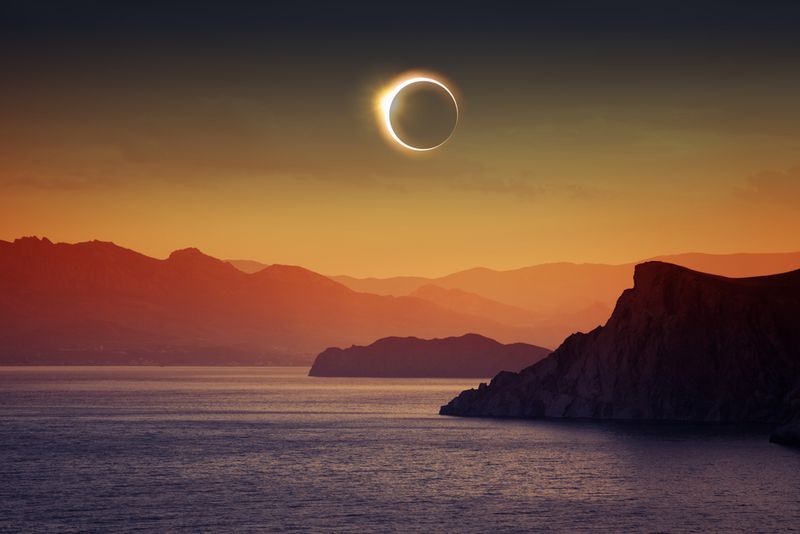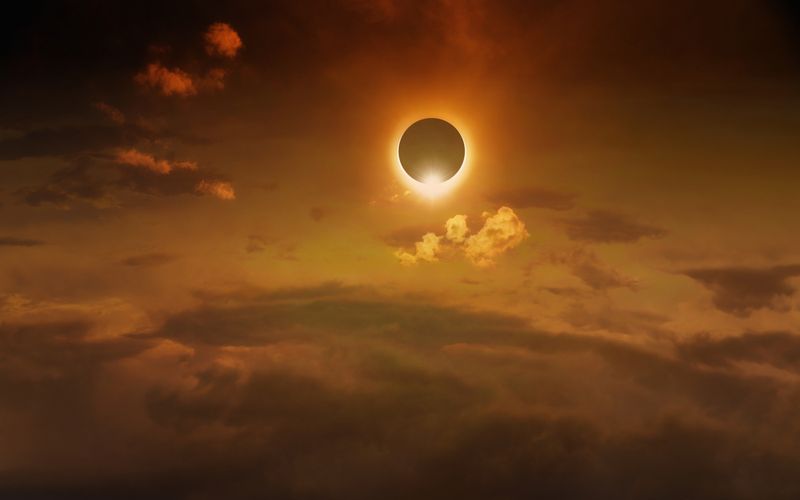As the Earth continues its eternal waltz around the Sun, the year 2024 promises to serve as a grand stage for one of the cosmos’ most exquisite performances. Mark your calendars, for not one, but two solar eclipses will grace our skies, offering a celestial spectacle that beckons both the amateur stargazer and the seasoned astronomer alike. Let's delve into the details of these upcoming solar eclipses, their visibility, and the profound impact they hold for us on Earth.
All about solar eclipse 2024

The Ring of Fire — Annular Solar Eclipse, April 8, 2024
The first act of this celestial ballet unfolds on April 8, 2024, with an annular solar eclipse. This phenomenon occurs when the Moon, positioned between the Earth and the Sun, covers the centre of the Sun but leaves its outer edges exposed, creating a dazzling "ring of fire." This path of annularity, where the ring is visible, stretches across a narrow band from the southwestern United States through to the northeastern regions. Observers located within this path are in for a mesmerizing sight as the daylight dims and the ring of fire emerges in the sky.
The Total Blackout — Total Solar Eclipse, October 14, 2024
The second act comes with an even more dramatic flair on October 14, 2024, as a total solar eclipse casts its shadow. During a total eclipse, the Moon completely obscures the Sun, plunging a swath of the Earth into daytime darkness. This total eclipse will be visible along a path that extends from the Pacific Ocean through several countries in North America and into the Atlantic. For those positioned within this path of totality, the experience will be nothing short of transformative. The landscape will darken, temperatures will drop, and stars will appear in what was moments ago a daylight sky.
Where to watch — Prime Locations for eclipse watching

For the annular eclipse in April, prime viewing locations include areas in the southwestern United States, moving through parts of Texas, and heading northeast towards the Great Lakes and into the northeastern states. The total eclipse in October will favour different regions, starting in the Pacific Ocean, crossing Mexico, sweeping across a significant portion of the United States, and finally moving out into the Atlantic Ocean. Major cities and remote locations alike within these paths will offer prime viewing spots for these cosmic events.
The impact of solar eclipse in 2024
While the visual spectacle of a solar eclipse is undoubtedly its main draw, these events also offer valuable scientific opportunities. Solar eclipses allow scientists to study the Sun’s corona, its outer atmosphere, which is usually obscured by the bright light of the Sun itself. Additionally, eclipses have profound effects on animal behaviour and the environment, offering a unique natural laboratory for observations.
Eclipses also remind us of the beauty and fragility of our place in the universe. They serve as a reminder of the incredible precision of the celestial mechanics that govern our solar system and the importance of preserving our view of the cosmos by combating light pollution.
The solar eclipses of 2024 promise to be monumental events that will captivate audiences around the globe. Whether you are a devoted astronomer, a curious observer, or simply someone looking to experience one of nature's most awe-inspiring spectacles, these eclipses offer a rare opportunity to witness the sublime beauty of our universe in motion. So, prepare your viewing glasses, mark your locations, and get ready to be part of these historic celestial events.




